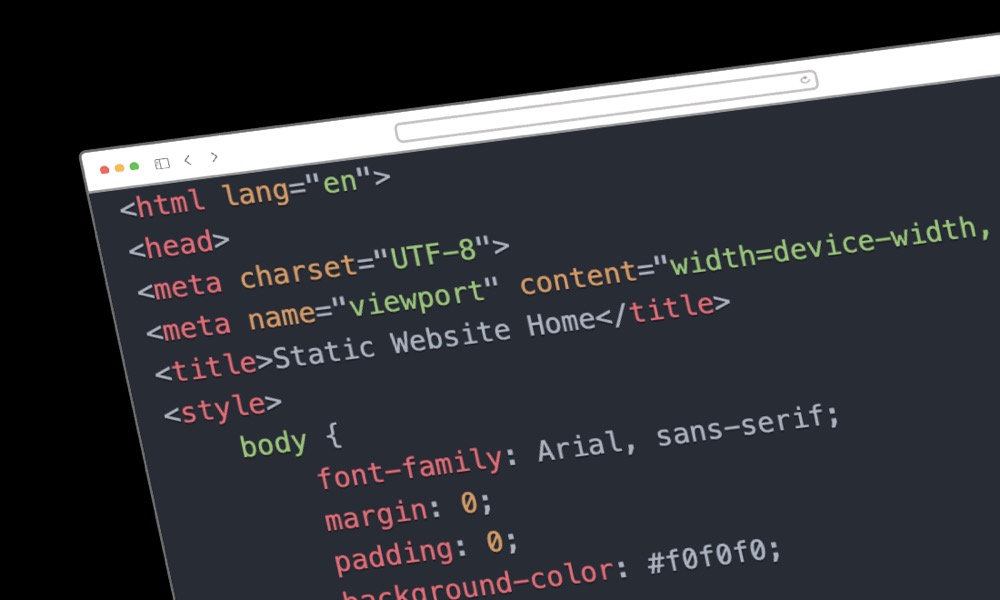Websites have become incredibly important for businesses in today’s market. They come in two main types: static and dynamic.
What is static website?
Static web, also known as static websites, are web pages that are sent to users exactly as they are stored, without any processing from the server. This means that the HTML, CSS, and JavaScript code are pre-built and delivered to users as-is. Static websites are usually simpler and load faster than dynamic websites because they rely on server-side processing to generate content.
Static websites are commonly used for simple websites with few pages and low traffic, like personal blogs or small business websites. They’re also often used for prototyping and testing websites before developing more complex, dynamic versions.
These websites are typically built using the popular trio of HTML, CSS, and JavaScript. They can be created with various tools and frameworks, with some popular ones being Jekyll, Hugo, Gatsby, and Next.js.

The good side and bad side of using static websites
One of the main advantages of using static websites is their speed and reliability. Since they don’t require server-side processing or database queries, they load quickly and are dependable. They’re also easy to deploy and store, as they can be served from a simple web server or content delivery network (CDN).
Moreover, static websites tend to be more secure than dynamic ones because there are fewer attack vectors for hackers to exploit.
However, static websites have limitations when it comes to interactivity and user engagement because they can’t generate content or respond to user input automatically without additional JavaScript or server-side processing. They’re also less flexible and customisable compared to dynamic websites, which can be tailored to specific user needs and preferences.
When to use a static website?
Static websites are often a good choice in the following scenarios:
1. For simple websites with few pages and low traffic.
2. For websites that require fixed content.
3. For websites that need fast loading times, reliability, and easy deployment.
4. For websites that don’t require interaction or user engagement beyond basic navigation.
What is a dynamic website?
Dynamic websites are created on the server side to better meet user requirements and can change their content based on user input and other dynamic factors. These websites are commonly used for building e-commerce sites, social networks, and other sites with high user engagement and interaction.
Dynamic websites are built using server-side technologies like PHP, Python, Ruby, combined with JavaScript frameworks like Node.js to create dynamic content. Developers often use databases to store and retrieve data, as well as user-generated content, and may use APIs to integrate with other services and applications.

The good side and bad side of using dynamic websites
One of the main advantages of dynamic websites is their flexibility and interactivity. They can automatically generate content and respond to user input without needing to refresh the page. This provides users with seamless and engaging experiences and enables complex features like user accounts, personalised recommendations, and real-time messaging.
However, dynamic websites are often more complex and resource-intensive than static websites. Building them requires advanced server-side skills and infrastructure to develop and maintain effectively.
Additionally, dynamic websites may be more vulnerable to security issues such as SQL injection and cross-site scripting (XSS).
Dynamic websites are a good choice for websites with high user engagement and interaction, but they may be overly complex for simpler websites with lower traffic and minimal interaction. It’s important to carefully consider the specific needs and goals of your website before deciding whether to use static or dynamic web development methods.
When to use a dynamic website?
Dynamic websites are a good choice in the following cases:
1. For more complex websites with many pages and high traffic.
2. For content that needs to change frequently and is generated based on user input.
3. For websites that require flexibility and easy customization according to specific user needs and preferences. For example if you plan to make very frequent changes to your website then you may benefit from using a dynamic website because then you can skip the “build process” required each time when you update your static website.
4. For websites that demand advanced interaction and user engagement, such as user accounts, personalized recommendations, or real-time messaging.
What are the core differences between a static website and dynamic website?
To summarise in a table:
| Feature | Static web | Dynamic web |
| Content | Pre-built, fixed content | Can generate content quickly to meet user demands |
| Functionality | Limited, often used for informational or advertising purposes | Provides advanced features like e-commerce, social networks, user-generated content |
| Interactivity | Designed for viewing only | Allows user interaction, feedback (comments, ratings) |
| Maintenance | Easier to build and maintain | Requires more maintenance and updates |
| Speed | Loads faster due to no database queries and server-side processing | Slower due to database queries and processing |
Which option is appropriate between static and dynamic websites?
Choosing between a static or dynamic website depends on what your website needs to do. A static website might be the right choice if your site is just a few pages providing information to the public. For example, if you want to create a simple, great-looking blog to complement your business, a static website could work best for that purpose. Similarly, if you want a static website to build a site with basic information about your company or the products and services you offer, then a static website would be the choice for you.
On the other hand, if you plan to build an e-commerce website with constantly changing products, a dynamic website would be the better choice. You can make suggestions to users based on their past purchases. If customers leave items in their shopping carts, you can activate a dynamic website to send reminders to those visitors to come back and complete their purchases. You can also use a dynamic website to create progressive web apps (PWAs) or other applications.
In 2024 the decision between static and dynamic is not so clear cut. Whilst dynamic sites are technically slower, there are many technologies and enhancements which can give them near static speeds. On the static site side, while they lack many dynamic features a range of services has emerged that allows you to embed dynamic services when required into your static website. In this way you can really have your cake and eat it, with static site performance around the world and dynamic features when you need them. As always there is a layer of complexity to manage with both setups.





